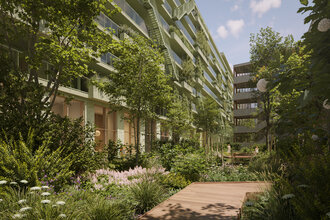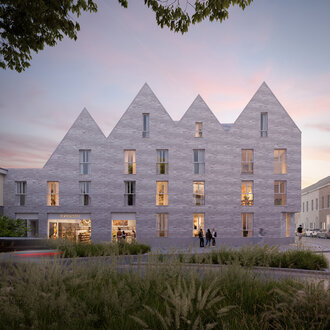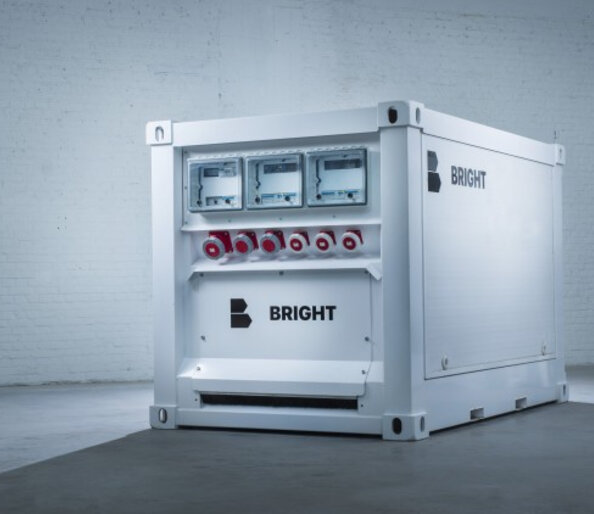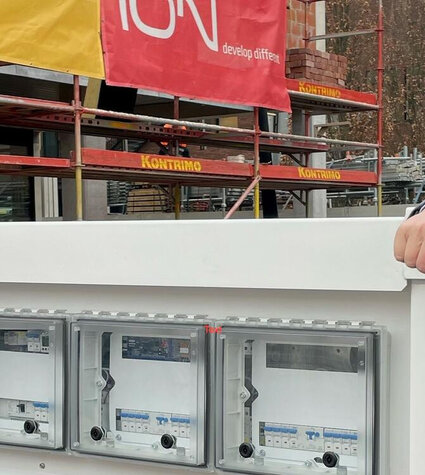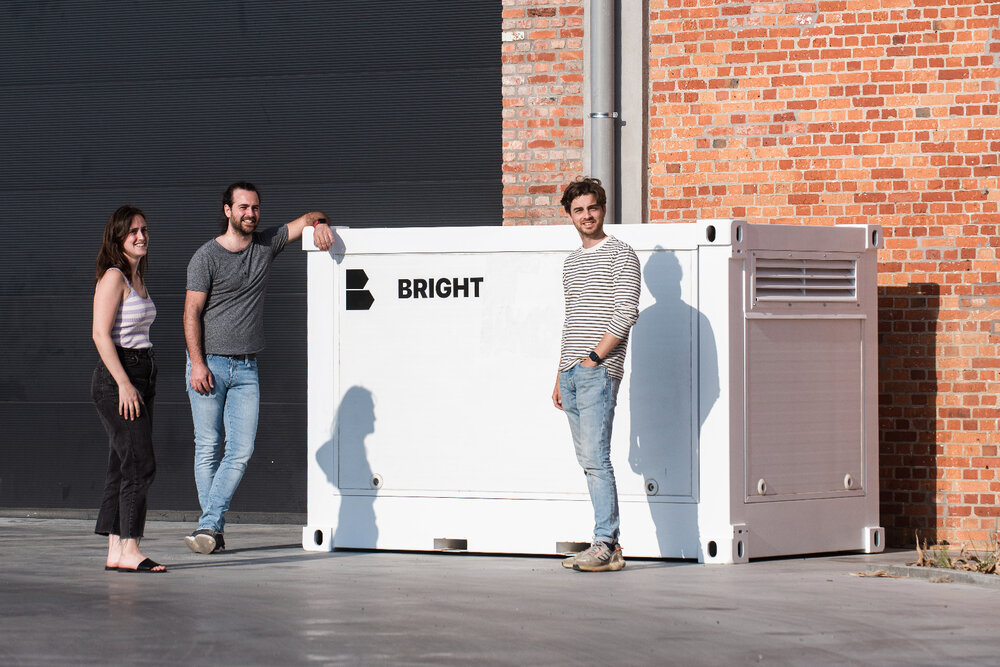

In cooperation with the progressive family business Bright Energy, we use electric yard batteries instead of traditional diesel generators. This results in a significant CO2 reduction, and noise and odor pollution are a thing of the past. Such a yard battery also has a positive impact on the sustainability scores calculated when certifying buildings, such as the renowned BREAAM certificate.
Diesel generators are very polluting and one of the least efficient ways to generate energy. Connecting a yard with one tower crane to a yard battery instead of a diesel generator saves an average of 60,000 kg of CO2 per yard per year (source: calculation verified by the independent agency Climate Impact Forecaster). This corresponds to the emissions of an average car traveling some 350,000 kilometers.

In the innovative energy management system, the battery acts as a crucial component for optimising energy efficiency. Similar to a water tank that is filled slowly and emptied quickly, the battery is charged during periods of low energy cost and discharged during peak hours. This process significantly reduces energy costs. The battery is mainly active during the 12 working hours a day, charging when energy is cheap, and powering the yard when rates are high.
A dedicated software tool supports choosing the right battery capacity and manages energy use efficiently. The tool provides detailed insight into consumption per device, which helps reduce energy losses. The system offers energy as a service, with customers only needing to connect their devices, while the installation and management of the battery systems are fully taken care of. This approach results in more sustainable, cost-effective energy management at construction sites.
Sustainability in action
Partner with us
We live up to our baseline "develop different" in the way we work together - whether you are a customer, supplier or other partner.
More about ION

